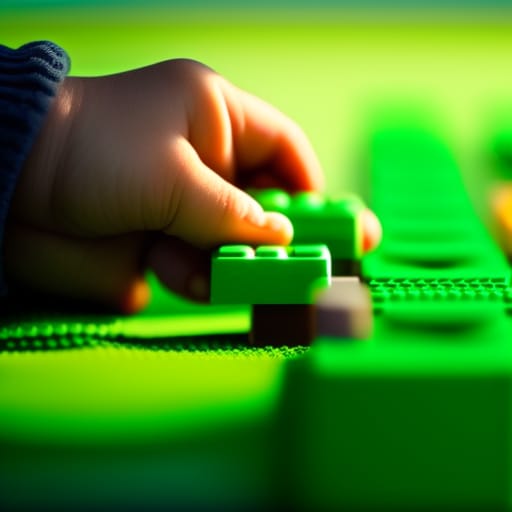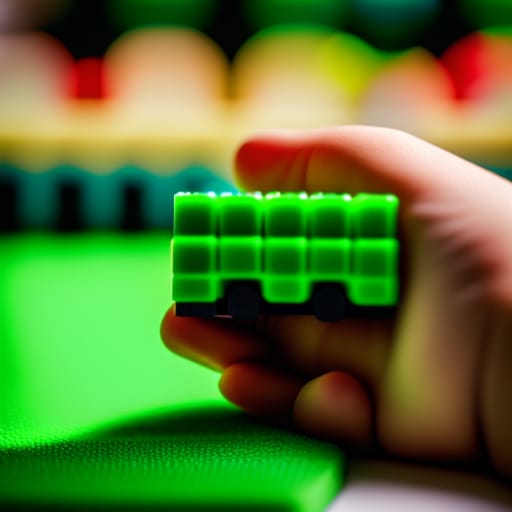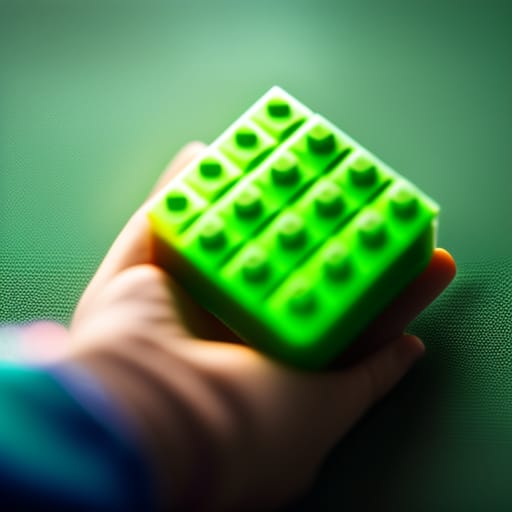Lego bricks. Brick-built models. Compatible brick brands. If you’re a parent, educator, or just an avid fan of building blocks, you’ve likely encountered the ubiquitous Lego brick system. With its interlocking bricks and near-endless versatility, Lego has captivated generations of children and adults alike.
In this beginner’s guide, we’ll explore the world of Lego-type building blocks – their history, purpose, and especially their value in educational settings. You’ll learn about the technology behind these clever plastic bricks, their environmental impact, and some innovative ways they are being used in schools today. We’ll also cover some key Lego lingo and provide tips for integrating Lego-based learning into curriculum and classrooms.
So let’s dive into the creative, colorful realm of Lego-type building blocks!

I. Introduction to Lego Type Building Blocks
Lego bricks trace their origins to 1932 Denmark when carpenter Ole Kirk Christiansen began making wooden toys. In 1949, the company introduced what we now know as the iconic interlocking plastic Lego brick.
The bricks were designed to stick together securely while also being easy for kids to take apart and reuse – a perfect combination for freeform creativity and experimentation. Lego bricks also featured a universal interlocking system, meaning bricks produced decades ago still fit with bricks made today. This ensured compatibility across Lego products.
By the late 1950s, Lego sets with themes like towns and space exploration ignited children’s imaginations. Lego bricks became a beloved toy around the world.
Today, in addition to the classic bricks, Lego produces specialized pieces like windows, wheels, Minifigures, and thousands of other elements in a vibrant array of colors. Yet the basic studs and tube brick design remains timeless. Lego bricks engage kids in constructive free play, model building, and STEM learning.
Now let’s explore some key Lego terms handy for any builder or educator:
- Brick-built – Made completely from Lego bricks, with no special molded parts
- BrickLink – Online marketplace for buying/selling Lego bricks
- Brickowl – Website for finding affordable Lego sets and bricks
- Brickset – Database of Lego sets and collectible minifigures
- BURP – Big Ugly Rock Piece Lego brick element
- LDD – Lego Digital Designer software to build models digitally
- LDraw – Open source library of Lego CAD models
And if you’re curious about which brands are compatible with Lego, some popular compatible brick manufacturers include Mega Bloks, Best-Lock, and KidKraft.
Next, we’ll spotlight the immense value of Lego-type bricks in education.
II. Educational Benefits of Lego-Type Building Blocks
With their ease of use, flexibility, and hands-on appeal, Lego bricks deliver outstanding educational benefits. Let’s explore some of the key ways educators are leveraging Lego-type building blocks for learning.
A. Enhancing Spelling and Word Recognition with Letter Lego Blocks and CVC Word Cards
Using a set of alphabet Lego bricks, elementary students can practice proper letter formation and spelling by assembling words. Teachers can also create CVC word cards – consonant-vowel-consonant words – for students to reproduce with letter bricks. This engages multiple senses and reinforces phonics concepts, letter recognition, and spelling skills.
B. Adapting the eBLOCK Platform for Middle School STEM Projects
The Lego Education eBLOCK lessons introduce key STEM concepts using Lego bricks. For instance, students can learn the basics of gear trains by building simple Lego machines. Or they can explore renewable energy principles by creating Lego wind turbines. eBLOCK provides a visual, interactive way to engage students in STEM learning.
C. Incorporating Building Blocks in Science Education and Skill Development
Lego bricks enable learners to physically represent science concepts and develop skills. Students can model solar systems, food chains, structures of molecules, and more. Building their own visual models boosts understanding and retention. Lego projects also promote critical thinking, spatial reasoning, and teamwork.
D. Language Prototyping Tool Based on Semantic Building Blocks
For language learners, a prototyping tool based on Lego-like “semantic blocks” helps develop vocabulary and grammar. Students combine various parts of speech blocks to construct proper sentences and paragraphs. This hands-on approach allows for iterative language experimentation and development.
As these examples show, Lego-type building blocks deliver a huge range of cognitive and academic benefits for students of all ages and abilities. Next, we’ll explore what makes Lego bricks so uniquely suited for education.
III. Understanding the Technology Behind Lego Type Building Blocks
There is some ingenious science behind the simple modular bricks that makes Lego a powerhouse educational tool.
A. The Science of Interlocking Bricks
Lego bricks snap together securely thanks to their precisely measured studs and tubes. Bricks have been manufactured with tight tolerances since 1958 to ensure proper clutch power and alignment. The stud diameter is 5.84 mm while each tube is 0.1 mm wider to enable a firm press fit when stacked vertically.
Lego bricks also feature cross supports and hollow bottoms to enhance strength without adding excess weight. The plastic itself provides just the right amount of flex and grip.
B. Manufacturing Process and Material Science Behind Lego
Original Lego bricks consisted of cellulose acetate. Since 1963, Lego elements have been made from acrylonitrile butadiene styrene (ABS) thermoplastic. This petroleum-based plastic provides durability, adhesion, and vivid color retention.
To manufacture a brick, ABS is injected into molds under high heat and pressure. The molten plastic takes the shape of the mold cavity. Once cooled and hardened, bricks are ejected from molds and undergo further processing to achieve precise finish.
From raw materials to finished sets, Lego invests greatly in research and development to enhance brick quality and manufacturing sustainability.
C. Impact of Lego-Type Building Blocks on Environmental Sustainability
Given the petroleum-based plastics, Lego bricks have faced criticism for sustainability issues. However, Lego is taking steps to use safer, plant-based materials, reduce packaging waste, and boost energy efficiency in production.
For instance, Lego botanical elements are now made from polyethylene derived from sugarcane versus petroleum. Impressively, sustainable Lego pieces are technically indistinguishable from traditional ones in terms of quality and performance.
Lego has also partnered with organizations like the World Wide Fund for Nature (WWF) to reduce environmental footprint and build awareness.
Next, we’ll explore some fun, practical ways to integrate Lego learning into classrooms.

IV. Educational Applications and Activities with Lego-Type Building Blocks
With some creativity, educators can adapt Lego materials to nearly any subject or learning level. Here are some engaging ideas to inspire Lego-based lessons in your classroom:
A. Building Words and Concepts with Lego-Type Building Blocks
- Use letter bricks to teach the spelling of vocabulary words
- Build phonetic structures like syllables or word families
- Construct idioms, similes, or metaphors using symbolic bricks
- Create prefixes, suffixes, root words for decoding practice
B. STEM Projects and Experiments Using Lego-Type Building Blocks
- Design vehicles, airplanes, or ships complete with moving parts
- Build programmable robots and code behaviors using Lego WeDo or Mindstorms
- Model molecules, cells, or atomic structures with bricks
- Explore mathematical concepts like fractions or ratios by creating visual examples
C. Hands-on Learning and Skill Development with Lego
- Promote fine motor skills and spatial reasoning through creative construction
- Practice following step-by-step building instructions
- Enhance collaborative abilities by building shared models
- Strengthen problem-solving by designing structures to meet criteria
- Explore historical or literary themes by recreating key scenes
D. Incorporating Lego in Language and Semantic Development
- Have English Language Learners build verbs, nouns, and adjectives from bricks
- Represent sentence structure or grammar concepts with brick configurations
- Use Lego robots to demonstrate vocabulary or actions
- Build semantic networks to illustrate word connections and meaning
The key is tailoring activities to curricular goals while allowing for plenty of imagination and discovery. Adding a fun Lego creation can turn any lesson into a more engaging, hands-on experience.
V. Integrating Lego-Type Building Blocks in Curriculum and Classroom Settings
For schools interested in using Lego materials for learning, here are some best practices for implementation:
A. Strategies for Integrating Lego in Educational Curriculum
- Start small – test Lego learning with a single class or small project
- Align activities to curriculum standards in math, science, language arts
- Ensure adequate brick supplies for all students to participate
- Provide challenge extensions for quick learners
- Include free building time to spark creativity and problem-solving
- Survey students for feedback on Lego learning experiences
B. Case Studies and Successes of Lego in Education
- A 1st grade class uses Lego Duplos to learn counting, patterns, sorting
- A middle school coding club builds Lego robots and programs autonomous behaviors
- A high school science class creates molecular models using Lego bricks
- A math teacher develops Schrödinger’s Cat thought experiment using Legos
- An engineering class designs earthquake-resistant towers under budget constraints
C. Challenges and Solutions in Implementing Lego in Classrooms
| Challenge | Possible Solution |
|---|---|
| Initial startup costs of Lego materials | Seek grants or parent organization funding. Start with small kits and expand over time. |
| Organizing and storing materials | Label bins or bags for sorting. Create student building stations with sorted bricks. |
| Label bins or bags for sorting. Create student-building stations with sorted bricks. | Collaborate to share lesson plans with other teachers. Start with pre-made builds or examples. |
| Student distraction during free building | Set expectations beforehand. Have students present/explain creations. |
| Reluctance from rigid curriculum programs | Present evidence of Lego education benefits. Offer as an enrichment activity. |
With flexible implementation and educator creativity, Lego bricks can provide enriching hands-on learning in virtually any educational setting or subject area.
VI. Future Trends and Innovations in Lego-Type Building Blocks
Even with its long history, Lego continues to push boundaries in the world of bricks, paving exciting new directions for their use in education.
A. Emerging Technologies and Innovations in Lego
- LEGO® MINDSTORMS® Robot Inventor – New robotics kit with motors and smart hub for coding autonomous robots
- Digital building instructions – Interactive 3D guides and modeling software for virtual builds
- LEARNING TILES – Blocks detect motion and interaction to teach programming concepts
- Boost coding system – Bricks with sensors allow kids to build and code robots
B. Potential Impact of Lego on Educational Technology
As Lego incorporates more electronics, programming options, and interactive capabilities, educators gain fresh new tools to engage students in STEM learning. Students also benefit from developing vital tech skills like coding, automation, and data literacy.
C. Research and Development in Lego for Educational Applications
The Lego Foundation actively funds research on the developmental benefits of structured block play. Studying factors like creativity, abstraction, and problem-solving helps optimize Lego for educational purposes.
User testing also allows Lego to gather student feedback for improving the intuitive appeal and usability of new products like Boost.

VII. Conclusion
A. Summary of the Educational Significance of Lego
For over 60 years, Lego bricks have captivated children and adults worldwide. The simple bricks inspire boundless creativity and build fundamental cognitive skills. Lego materials also integrate remarkably well across diverse educational settings and subject areas. Educators continue finding novel applications from preschool through higher education.
B. Implications for Educational Practices and Policies
Lego brick use in schools provides an affordable, flexible way to actively engage students in key academic concepts and skill building. Educators are encouraged to partner with school leadership, parent groups, and community organizations to fund and implement Lego learning programs. More teacher training in Lego education applications will also be beneficial.
C. Future Directions and Recommendations
Moving forward, growth in Lego-based learning seems assured by an unwavering commitment to product innovation and evidence-based educational research. Educators are also advised to leverage emerging technologies like coding kits and digital design tools to maximize Lego’s benefits for STEM education. With some imagination and dedication, Lego bricks are destined to continue fostering joyful learning and development for many generations to come.
Frequently Asked Questions
Q: What are the main educational benefits of using Lego-type building blocks?
A: Lego materials build skills in spelling, STEM subjects, motor skills, spatial reasoning, problem-solving, teamwork, and more. Tactile learning with Lego boosts engagement and retention.
Q: Which Lego brick types are best for classrooms?
A: For early learners, large Duplo bricks work well. Older students can use standard bricks and plates, or Mindstorms sets for coding projects. Letter bricks and CVC word cards aid literacy.
Q: How expensive is it to implement Lego-based learning?
A: Lego bricks can fit many budgets. Start with small starter kits, then expand. Buying in bulk or compatible bricks lowers costs. Grants and funding campaigns can offset expenses too.
Q: What are some solutions to challenges like storage or distractibility?
A: Sort bricks into labeled containers. Create building stations around the room. Set expectations before free building time. Have students present creations.
Q: Are there free resources to find Lego education lesson plans?
A: Yes, sites like Lego Education have activity ideas aligned to standards. Pinterest has many shared plans. Teachers can also borrow plans from schools with Lego programs.